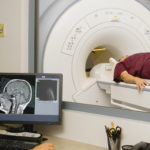Does the belly grow with uterine fibroids?
When the belly enlarges, a woman immediately thinks about pregnancy, but this is not always the case. Some gynecological pathologies can cause the abdomen to increase in size. Among them are uterine fibroids. The “Other Gynecology” clinic conducts a detailed study of the causes of abdominal growth due to fibroids using modern equipment.
Can the stomach grow with fibroids?
Not every patient with uterine fibroids has a growing belly. This is due to the location of the pathology and its size. In addition, when the abdomen enlarges due to fibroids, other parts of the body do not grow, so it is not associated with obesity.
Most often, large uterine fibroids are diagnosed in women after 50 years of age. Subserous and submucous fibroids grow rapidly. With these types of tumors, nodes form in the outer layer of uterine tissue.
Symptoms of a uterine tumor are usually erased or mild. Bleeding from uterine fibroids often occurs during menstruation, so it is difficult to separate them as pathological. A girl preparing for pregnancy turns to a gynecologist, and he reports about huge uterine fibroids.
If the belly grows on only one side, this means that the fibroid is located on one side of the reproductive organ. This is the main visual difference from pregnancy.
Reasons for growth
Doctors identify the main reasons for abdominal enlargement with myomatous nodes:
- Hormonal imbalances. With a high level of estrogen and progesterone, the fibroid begins to actively grow to the side with the formation of an external protrusion.
- Obesity. With high levels of female hormones, adipose tissue begins to be deposited in various places. The abdomen is always a problem area for overweight women. Due to weight gain, not all patients notice unexpected abdominal growth.
- Ignoring the recommendations of the gynecologist. For myomatous nodes, doctors prohibit prolonged exposure to the sun, solarium, hot baths and other thermal procedures. These procedures cause a strong dilation of blood vessels, which leads to improved nutrition of the fibroid and its rapid growth.
- Genetic factors. If the patient’s mother developed large fibroids, then the likelihood of such a process increases in her daughter.
- Transmitted venereal diseases. Because of them, the muscular and endometrial layers of the uterus become weak and myomatous nodes quickly grow in these tissues.
The Other Gynecology Clinic provides treatment for uterine fibroids according to international standards. A biopsy will help determine the type of fibroids and the risk of abdominal growth. With timely treatment, abdominal enlargement is excluded.
